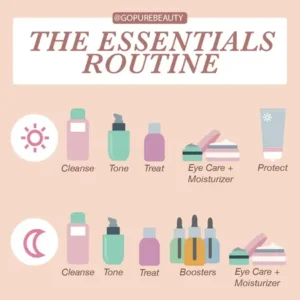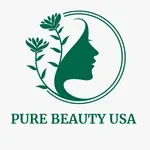How to Build a Pure Beauty Skincare Routine
Building a skincare routine can feel overwhelming, especially with the endless products and advice available. However, creating a pure beauty skincare routine tailored to your unique skin needs is simpler than you might think. In this guide, I’ll share everything you need to know to build an effective skincare routine that enhances your natural beauty and boosts your confidence.
Understanding Your Skin Type
Before we dive into the specifics of building a skincare routine, it’s crucial to understand your skin type. Knowing whether you have oily, dry, combination, or sensitive skin can help you choose the right products and techniques.
Identifying Skin Types
- Oily Skin: Characterized by excess oil production, which can lead to clogged pores and acne.
- Dry Skin: Often feels tight and may show signs of flakiness or rough patches.
- Combination Skin: A mix of oily and dry areas, often with an oily T-zone and dry cheeks.
- Sensitive Skin: Prone to redness, irritation, or allergic reactions.
To determine your skin type, cleanse your face, wait for an hour, and observe how your skin feels. This simple test can guide your product selection.
Key Components of a Skincare Routine
Building a pure beauty skincare routine involves several essential steps. Let’s break down each step to ensure you know how to build a skincare routine that works for you.
Step 1: Cleansing
Cleansing is the cornerstone of any skincare routine. It removes dirt, oil, and impurities, allowing your skin to breathe.
- Why It’s Important: A clean face allows other products to penetrate better.
- Choosing a Cleanser: Look for a gentle, sulfate-free cleanser that matches your skin type. For oily skin, consider gel-based cleansers; for dry skin, cream-based cleansers work best.
Step 2: Exfoliation
Exfoliating helps remove dead skin cells, revealing a brighter complexion. However, it’s essential to find a balance—over-exfoliating can damage your skin.
- How Often to Exfoliate: Aim for 1-3 times a week, depending on your skin type.
- Types of Exfoliants: Chemical exfoliants (like AHAs and BHAs) can be gentler than physical scrubs.
Step 3: Toning
Toners help balance your skin’s pH and prepare it for the next steps. They can also hydrate and soothe.
- Choosing a Toner: Look for alcohol-free toners with soothing ingredients like rosewater or witch hazel.
Step 4: Serums
Serums are concentrated formulations that target specific skin concerns, such as dark spots or fine lines.
- How to Choose: For hydration, look for hyaluronic acid. If you’re targeting acne, consider salicylic acid or niacinamide.
Step 5: Moisturizing
Even if you have oily skin, moisturizing is essential. It helps lock in hydration and maintain your skin barrier.
- Selecting a Moisturizer: Lightweight, oil-free moisturizers work well for oily skin, while creamier options are better for dry skin.
Step 6: Sunscreen
Applying sunscreen daily is crucial to protect your skin from UV damage, which can lead to premature aging.
- Choosing Sunscreen: Opt for a broad-spectrum SPF of at least 30, and remember to apply it every morning, even on cloudy days.
Targeted Treatments for Specific Skin Concerns
Sometimes, a general skincare routine isn’t enough. Targeted treatments can help address specific skin concerns effectively.
1.1 Acne-Prone Skin
For those with acne-prone skin, consider incorporating products with salicylic acid or benzoyl peroxide. These ingredients help unclog pores and reduce inflammation.
1.2 Anti-Aging
If you’re looking to combat signs of aging, seek out serums with retinol or peptides. These ingredients boost collagen production and help minimize fine lines and wrinkles.
1.3 Brightening Dull Skin
To brighten dull skin, look for vitamin C serums. Vitamin C not only evens skin tone but also adds a natural glow.
1.4 For Darker Skin Tones
Darker skin tones can benefit from products rich in antioxidants and hydration. Ingredients like shea butter and licorice extract can help address uneven skin tone and hyperpigmentation.
1.5 Advantages of a Clean Skin-Care Routine
A clean skincare routine promotes healthier skin, reduces the risk of irritation, and often leads to improved overall appearance. It allows your skin to breathe and absorb products more effectively.
1.6 Disadvantages of a Clean Skin-Care Routine
On the flip side, a minimalist approach may not address all specific skin concerns. Some individuals may require additional treatments or products to target particular issues.
Enhancing Your Routine with Extras
While a basic skincare routine is essential, adding extra steps can elevate your skincare game.
2.1 Exfoliation
As mentioned earlier, exfoliating can remove dead skin cells and improve texture. Incorporating a weekly chemical exfoliant can be a game changer.
2.2 Masks
Face masks can provide additional hydration, detoxification, or brightening. Use them 1-2 times a week for best results.
2.3 Eye Care
The skin around your eyes is delicate and often requires specialized care. Look for eye creams that hydrate and reduce puffiness or dark circles.
Tips for Success
To get the most out of your skincare routine, consider the following tips:
3.1 Homemade Natural Skin Care
If you prefer a DIY approach, there are numerous recipes for homemade skincare products using natural ingredients like honey, aloe vera, and coconut oil. Just ensure to patch test any homemade products.
Food and Sleep for Healthy Skin
What we put into our bodies plays a significant role in our skin’s health. Staying hydrated and eating a balanced diet rich in antioxidants, vitamins, and healthy fats can enhance your skin’s appearance.
Additionally, never underestimate the power of a good night’s sleep. Quality sleep helps your body repair itself, leading to a brighter, healthier complexion.
Building Your Routine: Morning vs. Night
Your skincare routine can differ between morning and night. Here’s how to structure each:

Morning Routine
- Cleanser
- Toner
- Serum (optional)
- Moisturizer
- Sunscreen
Night Routine
- Cleanser
- Exfoliant (1-3 times a week)
- Toner
- Serum
- Moisturizer
Tips for Maintaining Your Routine
- Patch Test New Products: Always test new products on a small area of skin to avoid adverse reactions.
- Stay Consistent: Consistency is key! Stick to your routine for at least a few weeks to see results.
- Listen to Your Skin: Pay attention to how your skin responds to different products. Adjust your routine accordingly.
Conclusion
Building a pure beauty skincare routine doesn’t have to be complicated. By understanding your skin type and following these steps, you can create a personalized routine that promotes healthy, glowing skin. Remember, skincare is a journey. Be patient, stay consistent, and most importantly, enjoy the process of discovering what works best for you!
Frequently Asked Questions (FAQs)
1. How long will it take to see results from my skincare routine?
Results can vary based on your skin type and the products used. Generally, you should start seeing improvements within 4-6 weeks.
2. Can I use multiple products at once?
Yes, but be cautious. Layer products from thinnest to thickest and watch for signs of irritation.
3. How do I know if a product is right for my skin?
Always read labels and choose products formulated for your specific skin type and concerns. If unsure, consult a dermatologist.
4. Is it necessary to use a toner?
While not essential for everyone, toners can enhance hydration and help balance your skin, especially if you have oily or combination skin.
5. What if I have sensitive skin?
If you have sensitive skin, look for fragrance-free and hypoallergenic products. Start with fewer products and gradually add new ones to monitor for reactions.
